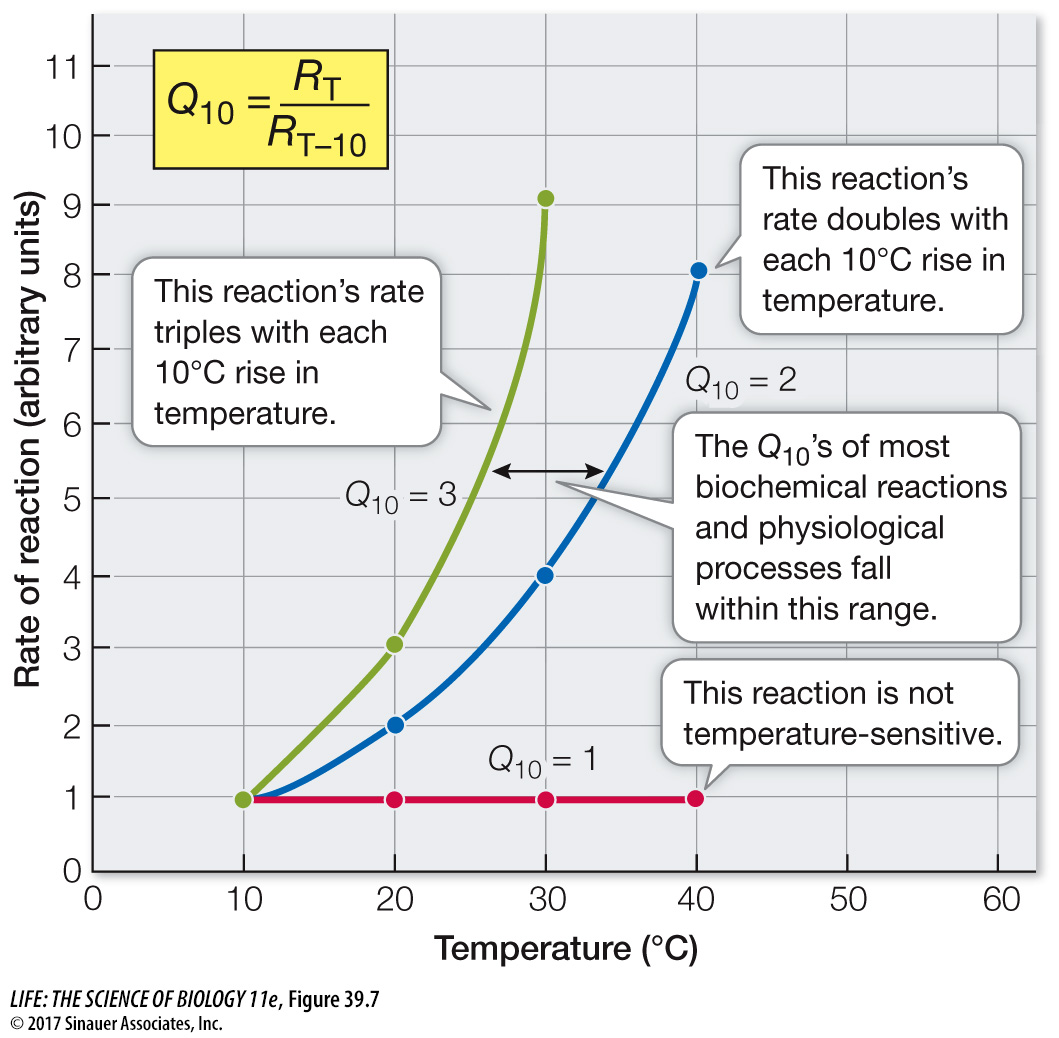Q10 is a measure of temperature sensitivity
Even between 0°C and 40°C, changes in body temperature create problems for animals. Most *biochemical reactions and the physiological processes they are involved in are temperature-

*connect the concepts As discussed in Key Concept 8.5, increases in temperature increase reaction rates because reactant molecules have more kinetic energy. Enzymes that control rates of biochemical reactions in metabolic pathways are influenced by temperature as well.
Q10 can be measured for a simple biochemical reaction or for a complex physiological process, such as rate of oxygen consumption. If a reaction or process is not temperature-

Notice that the Q10 values (except for Q10 = 1) plotted in Figure 39.7 produce curves rather than straight lines. This is because temperature increases in additive intervals (10, 20, 30, etc.) but reaction rates increase in a multiplicative fashion (2, 4, 8, 16, 32, etc.). Such curvilinear plots are common in biological data.
Changes in body temperature can disrupt an animal’s physiology because not all of the biochemical reactions that constitute the metabolism of an animal have the same Q10. These biochemical reactions are linked together in complex networks: the products of one reaction are the reactants for other reactions. Because different reactions have different Q10’s, changes in tissue temperature will shift the rates of some reactions more than others, disrupting the overall network. Therefore, to maintain homeostasis, organisms compensate for or prevent changes in body temperature.